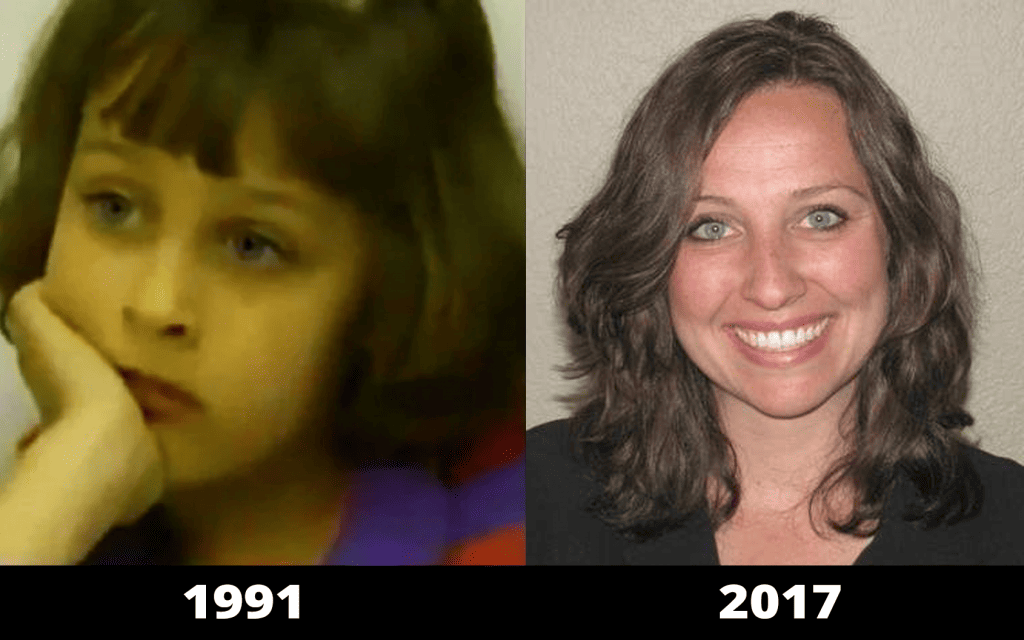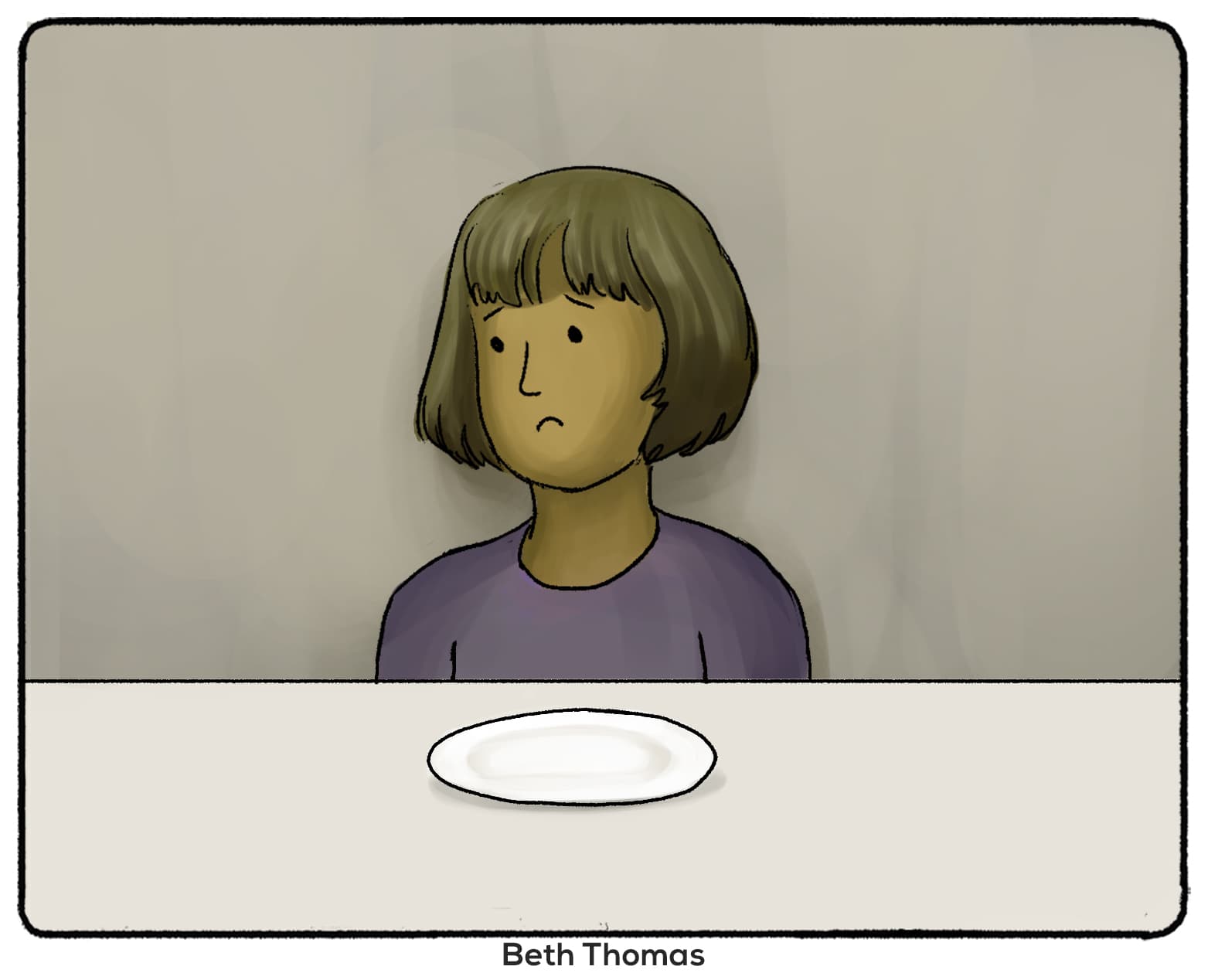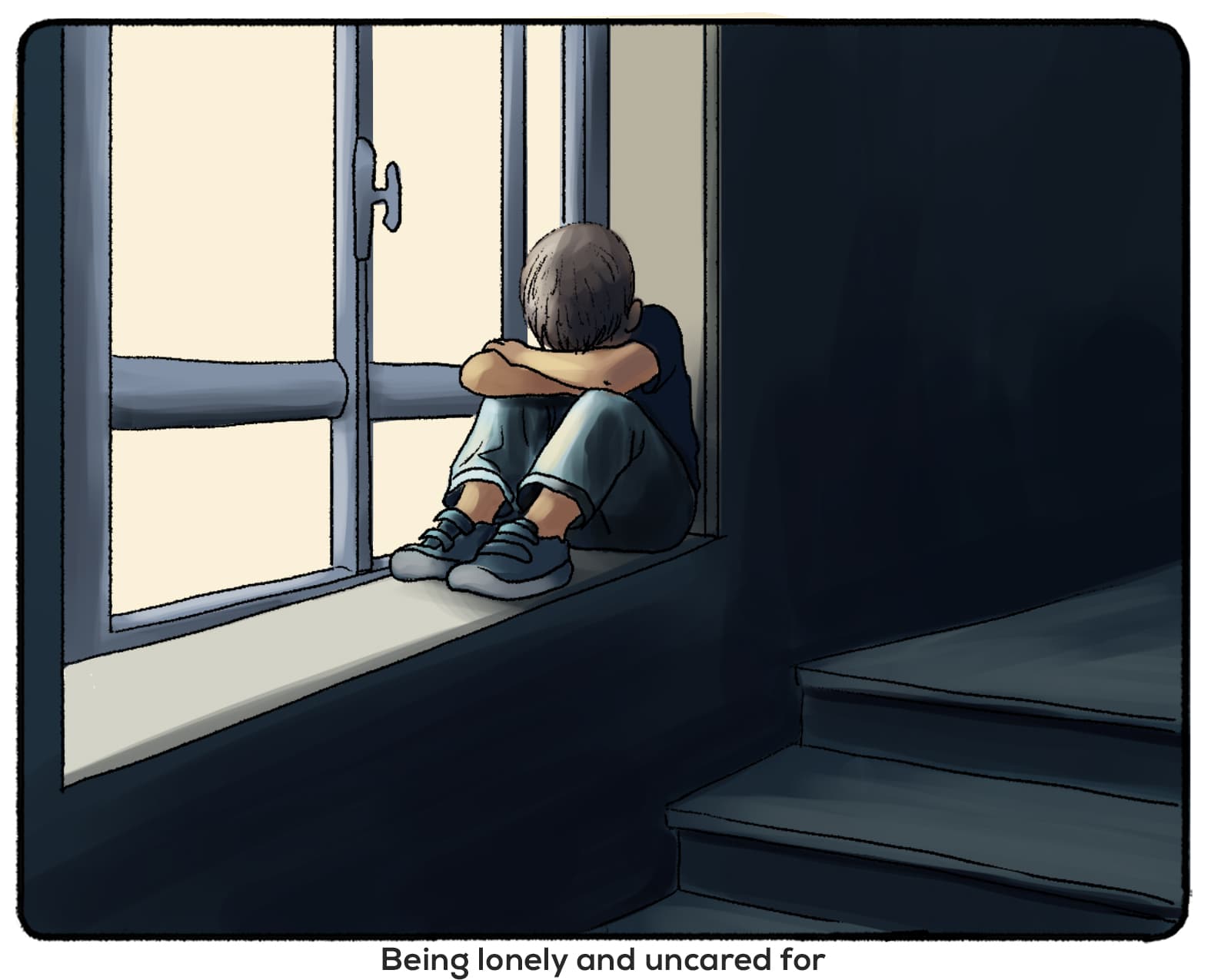In 1990, HBO released a documentary on Beth Thomas, a 6 ½ year old girl. The documentary, called Child of Rage, was extremely shocking. It included footage of Beth describing, in detail and without emotion, abuse that she experienced and that she inflicted upon others. She stuck her brother with pins. She killed baby birds. And she even had intentions of killing her parents.
You can still access this documentary on YouTube, but I should warn you, it’s hard to swallow.
Child of Rage gave an insight into seriously disturbed children before true crime became trendy. As psychologists look at Beth’s case then and now, we can see just how dangerous abuse and neglect can be when experienced as a young child. But we can also see that it is possible to develop a conscience and overcome even the most horrific of struggles.
Child of Rage

Where is Beth Thomas Today?
As a quick point of reference, you can see Beth Thomas now above, she is currently a nurse and has written a book about her experiences. After going through therapy, this "Child of Rage" is a success story of someone who has recovered from Reactive Attachment Disorder.
What Happened to Beth Thomas?
Thomas experienced severe trauma in the first two years of her life. At the age of 1, her birth mother passed away. She and her younger brother were left with her birth father. The birth father neglected the children’s well-being, leaving them with little food. He also routinely physically and sexually abused Beth.
At 19 months, Beth and her brother were adopted by a pastor and his wife. The couple did not know the extent of the abuse until Beth started displaying psychopathic symptoms. She did not appear to have a conscience. She acted out sexually and abused her brother as her father abused her. Her adoptive parents eventually would lock Beth in her room every night and sought out help for her condition. It was a very sad situation and shows the trauma and response to abuse.

Reactive Attachment Disorder
The first two years of a child’s life are crucial for developing a sense of attachment and a conscience. Beth and her brother did not get that opportunity and developed Reactive Attachment Disorder (RAD.) A RAD diagnosis is given only to children with the most severe attachment issues.
Severe attachment issues may develop when:
- A child has been bounced around from home to home without any stability
- A child’s hunger or hygienic needs are ignored for hours at a time
- Parents and caregivers are inconsistent with care or giving affection
- The child is left alone (or not touched) for hours or days at a time

A child with RAD may not perceive touch as a good sensation - they may resist hugs or other types of touch meant to nurture or show affection. They may also display more affection toward complete strangers than to their parents or primary caregivers.
Other symptoms of RAD include severe temper tantrums, troubling disobedience, or manipulative behavior. Not all children with RAD will set out to harm younger siblings or baby animals, as Beth did during her childhood. Beth’s is a severe case, caused by severe trauma.
How Many Children Are Affected By RAD?
Experts believe that between 1-2% of children may experience RAD in their earliest years. Unfortunately, that number is almost twice as high for children in the foster care system. As many as 5% of children placed in this system may experience RAD. (That study also reported that a year of treatment reduced that number to 2%.)
Abuse and neglect may increase a child's risk of developing RAD, but it's not a guarantee. Children who have been abused may not end up developing RAD. Only children are diagnosed with RAD. Diagnosis typically takes place between the age of nine months and five years.
How Did Beth Receive Treatment?
In Child of Rage, we see Beth Thomas receiving two types of treatment. The documentary opens with her talking to Dr. Ken Magid, a clinical psychologist. Magid specialized in children who have been through severe abuse and trauma in the first few years of their lives.
At one point, the danger of having Beth in the house was too much of a risk for her adoptive family. She was sent to intensive therapy under the care of Connell Watkins. In the documentary, Watkins described the control and care that helped Beth develop a conscience. At first, Beth had to ask for everything. She had to ask to eat, use the bathroom, etc. As Beth earned the trust of Watkins and other facilitators, she was given more privileges. Slowly, Beth began to feel loved, trusted, and accepted.
As you’ll see, Beth’s treatment is considered a success by many. But there is a dark side to some of Watkins’ treatments. In 2000, Watkins was arrested and convicted of reckless child abuse leading to the death of a child. She had killed a 10-year-old child while attempting to put the child through “rebirthing.” This was a process that was meant to simulate the child being in the womb - it ultimately led to the child’s suffocation. Watkins was not licensed as a therapist.
Fortunately for Beth, her work with Watkins had positive results. At some point during her time with Watkins, Beth was adopted by Nancy Thomas. While Beth is one of three children adopted and her husband, the couple has fostered over 100 children. Many of these children were emotionally disturbed like Beth.
If you're wondering how Beth Thomas is doing in 2021, you can actually listen to a full hour interview with her!
Beth Thomas Interview
Beth was able to attend public school and eventually studied to become a nurse. According to Nancy, Beth now works in a Neonatal Intensive Care Unit. This unit contains some of the most fragile and smallest humans. Beth’s ability to work in this unit is a true testament to her recovery and treatment.
Nancy started Families By Design, a program committed to helping families with adopted or fostered children. While she is not a psychologist or doctor herself, she is an accomplished speaker and author. She even co-authored two books with Beth herself, who contributes to some of the webinars and educational materials that Nancy distributes through her business. Beth has turned her her life's story into a program where she can help other individuals who were abused like her.
Beth Is Just One Case of RAD
Do all children with RAD physically abuse their siblings and have intentions to kill their parents? No. Will all children with RAD go on to become neonatal nurses? No. Beth Thomas is just one child who has gone through child abuse and received treatment for reactive attachment disorder. Her story just happened to be brought to light through an HBO documentary, connections with controversial therapy, and an ultimate story of hope.
Additional RAD Case Study
We may see another case like Beth Thomas as the subject of an HBO documentary in the future. Until then, the best place to learn about RAD is through other cases of reactive attachment disorder. Case studies illuminate just how tragic and complicated RAD can be.
Take this case from 2019. A four-year-old adopted child had been displaying symptoms of RAD for over 18 months. These symptoms included:
- Behavioral dyscontrol
- Emotional dysregulation
- Anxiety
- Hyperactivity and inattention
- Obsessions with food
- Attachment issues
Alongside RAD, the child was given a diagnosis of ADHD. Additional psychiatrists diagnosed the child with DMDD, PTSD, anxiety, and a mood disorder. These professionals believed medication would relieve the child's symptoms. The child began to take guanfacine, fluoxetine, methylphenidate, amphetamine salts, quetiapine, aripiprazole, and thioridazine. (Medications were not all taken simultaneously.) They did not alleviate the child's symptoms. Risperidone appeared to work, but only after increasing the dosage multiple times. After the child stabbed another child at school, they were taken to impatient care and another course of treatment was considered. The study ends with the child's admittance to the inpatient child psychiatric unit.
If RAD Is Left Untreated
Psychiatrists typically diagnose children under the age of five with RAD. That doesn't mean RAD goes away when the child turns six years old. If left untreated, RAD symptoms can become dangerous activities. Adolescents and adults with undiagnosed RAD may be mistaken as psychopaths, sociopaths, or simply reckless people.
Children do not develop a sense of empathy until the age of seven or eight. Children with RAD may not develop a sense of empathy at all. Their delayed development may result in the inability to trust, feel compassion, or experience remorse for bad behavior. And that bad behavior may become more and more dangerous if no intervention is taken.
It's not uncommon for adults with undiagnosed RAD to engage in many reckless behaviors or fall into substance abuse. This is likely the result of extreme anger, anxiety, or other feelings that confuse or motivate the adult with RAD. People with RAD may have a hard time forming relationships. They may isolate themselves and fail to connect with their neighbors or coworkers. Depending on the adult's experiences, they may fall into the category of more avoidant RAD or ambivalent RAD. (If you have studied attachment styles, you probably already know what these types of RAD look like in relationships!)
What does this mean for an adult with RAD? Well, there is still hope for them. Counseling and psychiatry can still help an adult overcome the trauma they experienced in their early life and allow them to be a productive, happy adult.
Have You Experienced Trauma and Neglect in Your Early Life?
You might be reading this and think that it sounds all too familiar. As an adult, you may be haunted by the trauma of your past. Feelings are hard to process. You engage in reckless behavior and can't seem to stop it. Relationships are difficult and cause you a lot of stress. If you are experiencing this and feel like you need help, know that help is available. There is no need to be ashamed of having anxiety, PTSD, or have gone through trauma in your life. A mental health professional can assess your symptoms and recommend a treatment plan that may or may not include medication, counseling, or inpatient care. Keep an open mind and know that it is possible to overcome symptoms of disorders like RAD.
RAD and Other Attachment Disorders
Attachment disorders fall on a spectrum, caused by different levels of abuse and neglect. While no two cases look the same, similarities and studies on attachment show that care, affection, and attention are crucial to a child’s development. Neglect and trauma is especially impactful when committed in the first few months of life. But with therapy, patience, and a strong support network, attachment disorders can be overcome and a child with RAD can go on to live a productive life.



